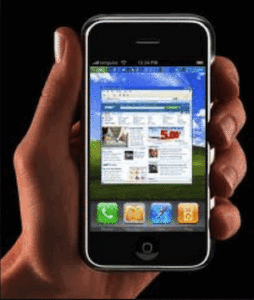This week’s presentation is Part II of “Wireless Systems for Hearing Aids” authored by Dr. Cynthia Compton-Conley. Part I focused on the various types of wireless systems. Part II is directed toward what to expect as technology moves forward, and what should be considered in a needs assessment program. Dr. Compton-Conley’s career has focused heavily on understanding how wireless systems interact with hearing aids, but also in determining how they apply to individuals having varying degrees of hearing loss.
To read more about how to improve use of the telecoil in hearing aids, reference previous articles on this site. Simply type in a word that identifies your interest in the “Google Custom “Search” section on the upper right side of the page. This will bring up a list of materials that you can access with a simple click. This search option allows readers to access every presentation written for Hearing Health and Technology Matters. Just type in a word to indicate your topic of interest and hit the “search” button. Wayne Staab, Ph.D., Editor
About the Author
Cynthia Compton-Conley, Ph.D., has had a distinguished career as an educator and consumer advocate, specializing in assistive technology and ADA access. Dr. Compton-Conley has motivated and inspired students for decades and is highly esteemed by colleagues for her contributions in the lab, the classroom and the community. Dr. Compton-Conley taught for three decades at Gallaudet University, where she also served as director of the Assistive Devices Center. Currently, she is enjoying an encore career as Director of Hearing Wellness at Etymotic Research, a research, development, and manufacturing company that has served consumers and hearing professionals for 30 years. Contact Cindy through her website www.soundstrategy.com.
What’s Coming Down the Pike?
There has been a lot of discussion concerning the use of smart phones as transmitters and transceivers. “Made for iPhone™” (and Android™) hearing aids already allow the user to download apps that control the hearing aid volume control, etc. Many consumers would like to see the day when they can buy a movie ticket, walk into a movie theater, enter a password into a phone, and then  watch as the phone seamlessly links to a wireless broadcast of the movie, complete with captions, if desired. These captions could be displayed on the phone or tablet or perhaps on Google Glasses. The audio signal would be broadcast from the phone to stereo silhouette inductors such as the T-Link or other coupling devices. Or, a wireless signal could be set up between the phone and the hearing aids.
watch as the phone seamlessly links to a wireless broadcast of the movie, complete with captions, if desired. These captions could be displayed on the phone or tablet or perhaps on Google Glasses. The audio signal would be broadcast from the phone to stereo silhouette inductors such as the T-Link or other coupling devices. Or, a wireless signal could be set up between the phone and the hearing aids.
Even better, movie-goers may see the day when they can walk into the movie theater and their hearing aids will automatically link up to the wirelessly transmitted movie sound track with no need for a phone because the audio system recognizes the identity of the hearing aids and their owner. On behalf of my colleagues and consumer friends who are sick and tired of being frustrated by proprietary wireless technologies, it sure would be nice to have an open platform so that all could hear well in public venues without the need for a complicated needs assessment, fitting, and verification and validation procedures. Just sayin’.
theater and their hearing aids will automatically link up to the wirelessly transmitted movie sound track with no need for a phone because the audio system recognizes the identity of the hearing aids and their owner. On behalf of my colleagues and consumer friends who are sick and tired of being frustrated by proprietary wireless technologies, it sure would be nice to have an open platform so that all could hear well in public venues without the need for a complicated needs assessment, fitting, and verification and validation procedures. Just sayin’.
Needs Assessment
Now, back to the present. Obviously, we have a number of choices when attempting to provide access to face-to-face communication, the reception of media, and telephone communication for our patients. With so many options, how do we navigate through the technologies to choose what is best for each person?
We do this realizing that we might need to employ a bit of an adjustment of perception of what it is we actually do when it comes to treating hearing loss. Most of us have been trained to focus on hearing aid fitting, when what we really should be focusing on is much broader than that. We should be focusing on hearing enhancement. This may mean hearing aids, but it also may mean hearing aids plus assistive technology. And, in some cases, it may mean assistive technology only.
By using best practices, we can better determine which technologies and/or communication strategies will best match a person’s hearing loss and acoustic lifestyle. This means including adaptive speech recognition testing such as the QuickSIN and HINT to help predict when signal-to-noise enhancement technologies are needed. It also means teaming with the person to determine exactly what is important to ensure a full lifestyle.
Depending on a person’s finances, motivation, “techiness,” acoustic needs, dexterity, cognition, etc. we may choose to fit a wireless hearing aid system. This may be perfect for TV, face-to-face conversation, and telephone reception in the person’s personal life and at work. However, we also need to think about that person’s access in large venues such as movie theaters, lecture halls, and concerts. In these situations, the person must be able to couple his or her hearing aids to large area listening systems. This means that, for now anyway, telecoils are essential – either inside the hearing aids or inside a streamer. In addition, the telecoils must be oriented correctly and programmed to provide optimal reception. People want to be able to flip from M to T without losing clear and pleasing reception.
If we follow best practices, we take the time to verify that the hearing aids we fit meet a research-based target as well as the hearing aid user’s desires. Since the telecoil contributes greatly to overall hearing aid satisfaction, why would we leave its performance to chance? So, keep those hearing aid analyzers at the ready and use ‘em. Finally, be sure to program user options of T-only as well as M + T (microphone plus telephone) for voice monitoring and for hearing companions, especially when in a quiet movie theater.
Is one technology necessarily better than another? Yes and no. It really depends on the person’s needs and the venue. What IS important is proper needs assessment and counseling. Before deciding on a system or systems, find out what s/he wants/needs to hear. That will help you determine if one microphone is needed, if more than one are needed and where they should be placed. It will also help you decide if you need one basic system or perhaps one type of system for personal use and another that is purchased for use at work by the employer (under ADA mandate).
And, do not forget fidelity. We should never recommend any system unless we have listened to it ourselves to ensure that it sounds good. Also, bear in mind that audiophiles come with all dB levels. When I worked at Gallaudet, I saw people with all degrees of hearing loss, from high frequency mild loss to corner audiogram. Regardless of degree of loss, most people opted for stereo reception, if possible. Stereo streaming from a transmitter directly to the hearing aids or via a Bluetooth/NFMI streamer goes a long way, as do stereo silhouettes plugged directly into a Bluetooth/NFMI streamer or directly into an iPod™.
![]() The bottom line is that it is not about the hearing aids or the wireless systems. It is about the people and whether or not we are meeting their receptive communication needs.
The bottom line is that it is not about the hearing aids or the wireless systems. It is about the people and whether or not we are meeting their receptive communication needs.
Online Information and Needs Assessment Tool
For more information (including helpful illustrations) on the various ways to couple hearing aids to wireless as well as hardwired systems, visit my website: www.soundstrategy.com and click on Hearing FAQS or Tutorials. The goal of this website is to educate you as well as the people you serve about assistive technology options. In my encore career, I have the freedom to continue my community outreach in the area of assistive technology and communication access. My goal is to provide unbiased and transparent information on assistive technology. Yes, I might mention some of Etymotic’s products, but I will also be mentioning the products of other companies, as there are many great products that people find very helpful.
The website contains a Face-to-Face Needs Assessment Tool that consumers can take to determine if they should consider  hearing aids and/or other technologies. In the future, there will be other needs assessment tools for alerting, media, and telecommunications technologies. As with most of life, the site is a work in progress. So visit if you can and let me know what you think. I would love to hear your comments and suggestions so that, together, we can make the site a useful resource for audiologists, students, and consumers. My email: [email protected].
hearing aids and/or other technologies. In the future, there will be other needs assessment tools for alerting, media, and telecommunications technologies. As with most of life, the site is a work in progress. So visit if you can and let me know what you think. I would love to hear your comments and suggestions so that, together, we can make the site a useful resource for audiologists, students, and consumers. My email: [email protected].
iPhone™ is a registered trademark of Apple, Inc.
Android™ is a registered trademarks of Google Inc.








Would it not be nice…just saying to!
Hearing a movie with captioning in a public theater is something I hope to see before I pass. At 59 with a profound hearing lost, it might be close!
It seems that something gets lost because of the lack of uniformity with respects to hearing losses. However, emphasis on basic fundamental requirements, would certainly help things along.